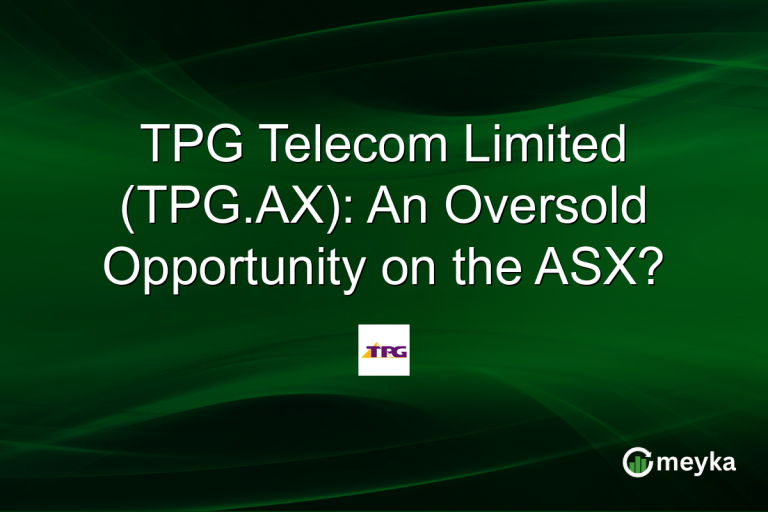The Rollercoaster Seven Weeks for Guzman y Gomez Stockholders
When Guzman y Gomez (GYG) listed on the Australian Stock Exchange earlier this year, excitement was sky-high. The Mexican-inspired fast-food chain had already built a loyal following, and investors saw the IPO as a chance to join its growth story. In the first few days, the stock soared, creating headlines and fueling the buzz around one of the most talked-about market debuts of 2024. But as we know, markets rarely move in a straight line.
Over the past seven weeks, GYG’s share price has been anything but stable. We’ve seen sharp rallies followed by sudden dips, leaving many stockholders thrilled one day and anxious the next. This pattern is not unusual for new listings, but the intensity of the swings has surprised even seasoned investors.
We need to ask: what is really driving these moves? Is it just hype, or do the fundamentals support long-term growth? Let’s analyze the ups and downs of GYG’s stock, uncover the reasons behind the rollercoaster ride, and think about what the future might hold for investors.
Background: Guzman y Gomez and its IPO story
Guzman y Gomez (GYG) is a Mexican-inspired quick-service chain founded in Australia. It grew on a promise of “clean” ingredients and fast service, then pushed hard into drive-thru and digital ordering. The company listed on the ASX on June 20, 2024, at an offer price of A$22 a share.

The debut was electric. Shares jumped about 36% on day one and closed near A$30, making it one of the strongest Australian IPO launches in years. Media and brokers called it a rare bright spot for new listings. The float valued GYG at roughly A$2.2 billion and funded an expansion plan focused on more Australian stores and a test beachhead in the United States.
Week-by-week breakdown of the rollercoaster ride
The first two weeks after listing were a sugar rush. Momentum traders piled in. The stock held well above the A$22 offer and hovered near A$30 as early updates flagged solid like-for-like sales in Australia. Analysts praised the execution but warned about valuation risk.
Weeks three and four brought gravity. Profit-taking hit new IPOs across the market, and research notes asked if the price had run too far ahead of earnings. Articles debated whether a premium multiple could last in a cost-of-living squeeze. Sentiment cooled even as store metrics looked healthy.
Week five saw a sharper dip. Investors focused on the long road to U.S. scale and the cash needed to get there. A few brokers trimmed forecasts and targets. The narrative turned from “hot debut” to “prove-it stock.”
Week six showed a brief bounce after growth headlines. Sales in Australasia stayed strong. New dayparts and menu changes boosted demand. Still, investors questioned margins as wages and food costs rose.

Week seven was a jolt. The company posted full-year numbers showing its first-ever statutory profit and record system sales. It also declared an inaugural dividend. Yet the market fixation was elsewhere: U.S. losses widened, and early FY2026 sales growth in Australia slowed to about 3.7% in the first seven weeks. Shares fell more than 20% and touched all-time lows near the IPO price. The message was blunt. Growth is real, but expectations were higher.
Guzman y Gomez: Key factors driving volatility

Valuation is the first lever. GYG commanded a premium multiple from day one. That premium requires fast unit growth, rising margins, and a clear path to U.S. scale. When actuals or guidance undershoot, the share price can move hard. Morningstar set a fair value near A$16 in mid-2025, and underscored the gap between enthusiasm and conservative models.
Expansion costs cut both ways. New stores add sales, but corporate-run outlets compress margins at the start. The U.S. program in Chicago is early and loss-making. Management said losses would widen as the footprint grows. That is normal for a test market, but it is painful for near-term earnings. The latest results showed a U.S. operating loss of around A$13.2 million, worse than expected.

Competition and consumer pressure add chop. Quick-service heavyweights chase the same budget-conscious guest. Delayed menu price rises helped demand but trimmed network margins. When consumers trade down or skip meals out, traffic can wobble and amplify any miss versus forecasts.
Investor behavior amplified swings. Early hype and FOMO lifted the stock well above the offer price. Later, a small guidance wobble and wider U.S. losses triggered a sharp reversal. That pattern is common in fresh IPOs with limited public history and a narrow free float.
Analyst and market reactions
Brokers stayed mixed through the swings. Some kept neutral stances while trimming targets to reflect tighter corporate margins and a slower U.S. ramp. Others argued that like-for-like sales in Australasia remained robust thanks to menu refreshes and late-night trading.
Aggregators show a spread of Buy, Hold, and Sell ratings with average targets below the early highs. The split reflects different views on the pace of U.S. scale and the durability of premium pricing.
Media tone also shifted. June 2024 stories highlighted a “hottest IPO” narrative. August 2025 headlines focused on the earnings miss versus expectations, the all-time low share price, and the risk of further U.S. losses. This whiplash-framed sentiment for retail investors made each data point feel bigger than it was.
What does this mean for current stockholders?
Short-term moves have been extreme. The business remains on a growth path, but the market is asking for proof at each step. Australian stores deliver scale and cash flow. International units add upside but require patience and capital. Dividend initiation signals confidence, yet it does not offset guidance risk or U.S. drag in the near term. Holders face a classic trade-off: accept volatility now for a possible larger network later, or wait for cleaner earnings with less expansion burn. The right choice depends on risk tolerance and time horizon.
Looking ahead: the next 6-12 months
The pipeline is busy. Management targets more openings in Australia and steady progress in Singapore and Japan. Several outlets now operate 24/7, with breakfast and late-night driving incremental sales. If guest demand holds and execution stays tight, same-store sales can support margins despite wage and input pressures. That said, early FY2026 trading showed slower growth around 3.7% in Australia. Any rebound there would help sentiment.

Catalysts are clear. Quarterly trading updates, store openings, and any U.S. unit economics milestones will matter. Signs that Chicago restaurants are moving toward positive four-wall EBITDA could change the narrative quickly. Conversely, bigger-than-planned U.S. losses or weaker traffic would weigh on the multiple. Broker revisions and target updates will track those beats and misses in real time.
Macro is the wild card. If inflation cools and real wages improve, quick-service visits can stabilize or grow. If household budgets tighten again, even strong brands feel it. In that world, disciplined pricing and operational efficiency become the moat.
Final Words
The Guzman y Gomez seven-week ride tells a simple story. Investors loved the growth idea. Then they demanded proof, fast. The latest results gave both hope and caution: record sales, a first dividend, and sticky demand in Australasia, but heavier U.S. losses and softer early-year sales growth. The path to scale is open. The cost of that path is now front and center. For this stock, execution beats headlines. Each new store and each margin step will decide the next leg of the chart.
Frequently Asked Questions (FAQs)
Guzman y Gómez was started by Steven Marks and Robert Hazan in 2006. It later received investments from TDM Growth, Magellan, and Barrenjoey Capital Partners.
For the year ending June 30, 2025, Guzman y Gómez posted a net profit after tax of A$14.5 million.
Download the GYG app. Sign up for GOMEX Rewards. You get a free burrito coupon right after registering.
Disclaimer:
This is for informational purposes only and does not constitute financial advice. Always do your research.







